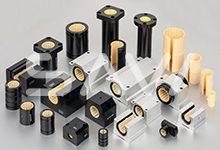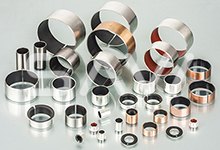EP Plastic Self-lubricating Bearings
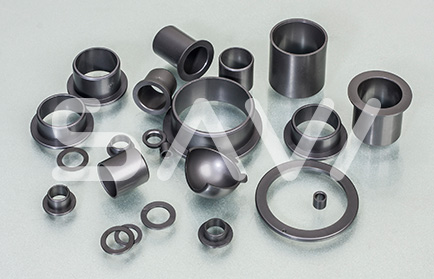
-
EPG Plastic Bearings
Applications ace high loads. As the perfect combination of fiber-reinforced and lubricating materials, it can be widely applied at 130 degrees.
1: continuous use temperature: -40 ℃ ~ + 130 ℃;
2: For high loads, common good;
3: Suitable for dry running, maintenance-free;
4: for different shaft materials;
5: for rotating, oscillating motion;
6: Anti-dust ability.
TechnologyMaterialSize table Download
The max PV value of the EPG series bearing is 0.5N/mm2*m/s which detemines the load capacity of bearing is inversely proportional to the speed. Please refer to the chare for more detailed information (Graph EPG-1).
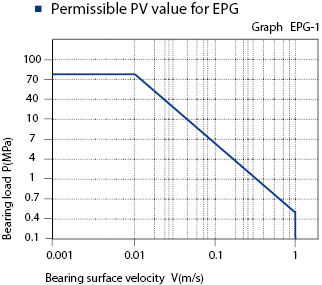
EPG allows the max static load of 80Mpa, The max compressive deformation rate under the max load is listed in Graph EPG-2; The actual load capaxity of bearing is slightly less than 80Mpa, The bearing load is variable against the speed and temperature, Fast speed( Vmax: 1.0m/s) results into higher temperture(Tmax: 130℃) which decreases the load capacity of the bearing. Please refer to the Graph EPG-3 for such variation.
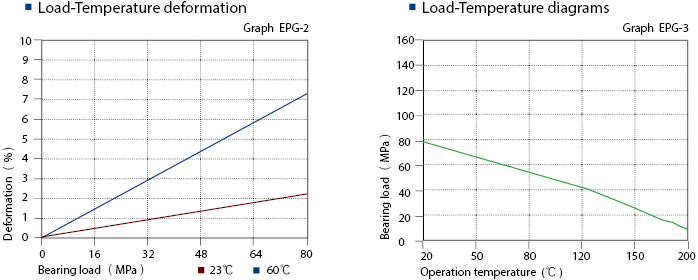
The friction factor of the sliding bearings is relatixe to the bearing load, operation speed and the roughness of the shaft material. EPG Bearing Friction factor decreased along with the increasing of the loading( See Graph EPG-5) and increased along with the increasing of the operation speed(See Graph EPG-4). The above feature induces the EPG material is applicable for the high load and low speed operation while too smooth and too rough surface may result into the increasing of friction factor. The recommended surface roughness of EPG is Ra0.5~ Ra0.8(See Graph EPG)
| EPG | Dry | Grease | Oil | Water |
| Friction coefficient μ | 0.08~0.18 | 0.09 | 0.04 | 0.04 |
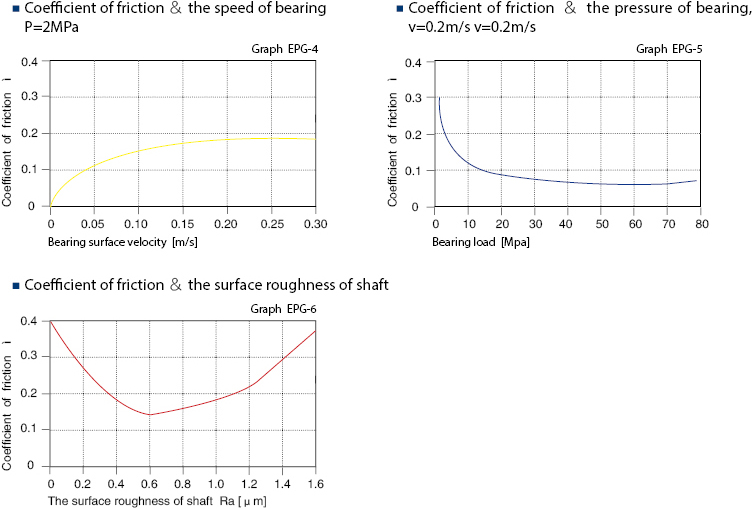
Test of the bearing against various shaft materials shows that the material EPG features the best performance where the shaft material is carbon steel and hard chrome steel under low loading. (See Graph EPG-7 and Graph EPG-8). Therefore, the higher the load is, the more critical the hardness of the hardness of the shaft will have to be. The softer shaft will be worn off sooner and as a resuit, the bearing wearing will be increased. But when the loading is increased over 2MPa, the wearing of the bearing will be better along with the increasing of the shaft hardness.
Refer to Graph EPG-8. It shows that the material EPG is better under the oscillation operation comparing with the rotation operation. Under the same condition, the wearing feature of the oscillation operation is much better than that of rotation operation. This feature is sharply improved under higher loading.
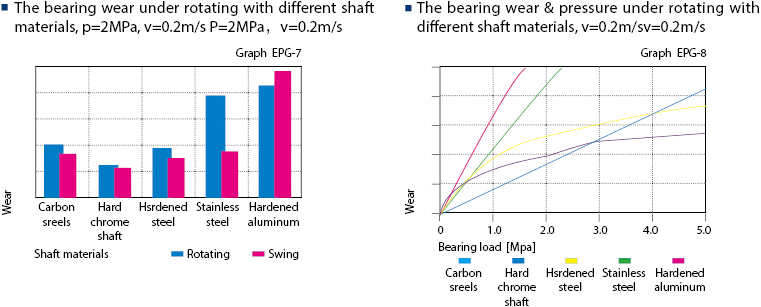
EPG is good at chemical resistance against mild base, weak acidic medium and various kinds of lubricants.
The water absorb rate of EPG is 0.7% under the atmospheric pressure while it is 4.0% when the material is immerged into water. The application environment has to be considered because of its water absorb properties.
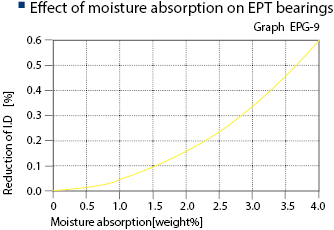
EPG can maintain its color unchanged when it is exposed into the UV ray. The material performance stays stable.
The Interfit Tolerance
| d mm² | Tolerance after fit E10 | Fit Housing H7 | Fit Shaft h9 |
| >0~3 | +0.014~+0.054 | 0~+0.010 | 0~-0.025 |
| >3~6 | +0.020~+0.068 | 0~+0.012 | 0~-0.030 |
| >6~10 | +0.025~+0.083 | 0~+0.015 | 0~-0.036 |
| >10~18 | +0.032~+0.102 | 0~+0.018 | 0~-0.043 |
| >18~30 | +0.040~+0.124 | 0~+0.021 | 0~-0.052 |
| >30~50 | +0.050~+0.150 | 0~+0.025 | 0~-0.062 |
| >50~80 | +0.060~+0.180 | 0~+0.030 | 0~-0.074 |
| >80~120 | +0.072~+0.212 | 0~+0.035 | 0~-0.087 |
| >120~180 | +0.085~+0.245 | 0~+0.040 | 0~-0.100 |
Material
| Material Properties Table | |||
| Common Capability | Unit | EPG | Testing Method |
| Density | g/cm³ | 1.46 | |
| Color | Dark grey | ||
| Max.water absorption,23℃/ 50% | [%weight] | 0.7 | DIN 53495 |
| Max.water absorption | [%weight] | <4 | |
| Dynamic friction /steel | μ | 0.08-0.18 | |
| Max.PV(dry) | MPa•m/s | 0.5 | |
| Mechanical behavior | |||
| E-module | MPa | 7,800 | DIN 53457 |
| Tensile strength,20℃ | MPa | 200 | DIN 53452 |
| Compressive strength | MPa | 80 | |
| Max.static pressure of the surface,20℃ | MPa | 80 | |
| Shore D hardness | 112 | DIN 53505 | |
| Physical and thermal properties | |||
| Continuous work tempreature | ℃ | +130 | |
| short-time work tempreature | ℃ | +220 | |
| Minimum operating temperature | ℃ | -40 | |
| Thermal conductivity | W/m•K | 0.25 | ASTM C 177 |
| Thermal expansion,23℃ | K | 9 | DIN 53752 |
| Conductive propertiesK-1•10-5 | |||
| Volume resisticity | Ωcm | >1013 | DIN IEC 93 |
| Surface resisticity | Ω | >1011 | DIN 53482 |
-
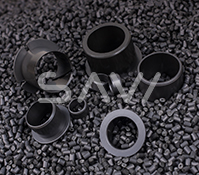
-
EPT
Universal BearingsIt can meet most applications working temperature of 80 degrees below, excellent wear resistance...
READ MORE >>
-
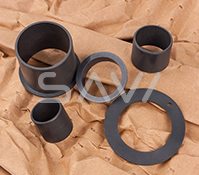
-
EPG
High load-bearingApplications ace high loads. As the perfect combination of fiber reinforced material and lubrication.
READ MORE >>
-

-
EPH
Corrosion-resistant bearingsHigh temperature of 200 degrees and a low coefficient of friction material...
READ MORE >>
-
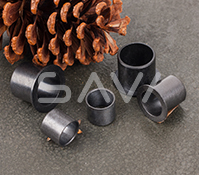
-
EPX
High-temperature
bearingsHigh temperature of 250 degrees of self-lubricating material. High chemical ...
READ MORE >>
-
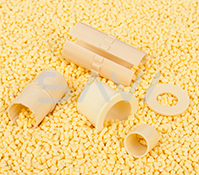
-
EPJ
High-speed bearingsLow coefficient of friction and high wear resistance perfect combination. Rotary, linear and oscillating...
READ MORE >>
-

-
EPS
Tetrafluoroethylene modified bearingHigh-speed low-cost solution. Lower temperature of 260 degrees ...
READ MORE >>


